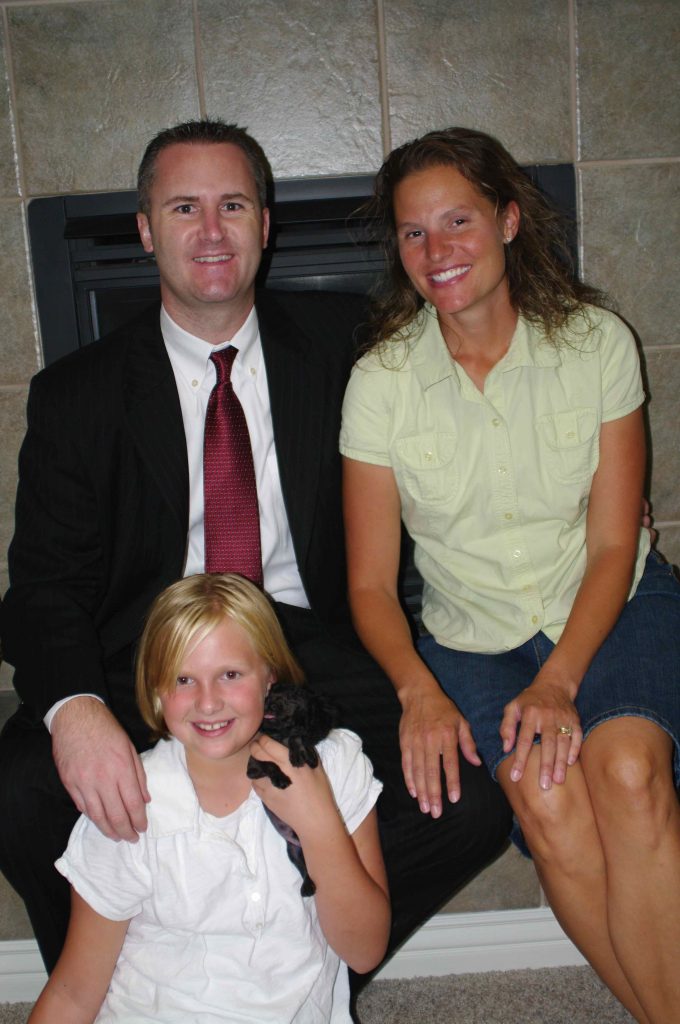Saratoga Springs, Utah, October 2010
At the age of twenty-three, Sabina Suggs was diagnosed with Chronic Myelogenous Leukemia (CML). Her cancer was in remission for over a decade when it unexpectedly returned in 2009. Sabina was also a member of the United States Air Force/Utah Air National Guard, served a mission in the Netherlands and Northern Belgium, and is the mother of one adopted daughter. In this interview Sabina compares running to life’s journey and lessons learned along the way.
How were you first diagnosed with leukemia?
My husband, Scott, and I married in July of 1997. Three months later, we were going to move to Moscow, Russia, to work at the embassy together. While preparing for that move we had to get our medical clearance. I remember the night the doctor called and said, “How are you feeling?”
I said, “Oh, I’m fine. A little tired, but I just got married. I’m going to school full-time and I’m working full-time.” But my white blood cell counts were really high, so he had me go to a specialist the next day.
I remember when they first told me that I had leukemia… the shock of it all and them asking if I had any questions and thinking, “I don’t even know what to ask!” I think it’s funny now, but the first thing that came to my mind was, “How am I going to tell my grandma?” I don’t know why. And right after that was, “How am I going to tell my mom?” My mom is also a cancer survivor. I think the hardest part of having cancer is that everyone around you feels so helpless, and you feel helpless. There’s really nothing you can do other than decide, “I’m going to get through this.”
Scott was diagnosed with Multiple Sclerosis while we were in Russia a year later. I feel like we’ve had our share of medical problems. We’re made for each other. Everyone has a disability of some sort, whether it’s something that people can see, or whether it’s something that’s inside. Everyone has insecurities, or a disability. It is really up to you how you deal with it and how you face it. I think 95-98 percent of the time I can stay positive about it. But I still have moments where I do the “poor me” routine. For instance, I feel like I’ve missed out things, like not being able to go through a pregnancy.
After your husband, Scott, was diagnosed with MS, you returned to Utah. How did you make the decision to adopt?
The doctors told me that with my type of cancer, I had less than a two percent chance of being able to conceive. My first reaction was, “You’re telling me I have a chance?” For a while I thought I was going to be the miracle, part of the 2 percent. But in 2000 we prepared to adopt.
Katie’s birth parents are Russian. She fits right into our family. I feel like I have my angel baby. I feel like she is for me. Had I not had cancer, she wouldn’t be my daughter. If all of my health challenges are so that I could be her mom, it is worth it.
I don’t think there has been a time when Katie hasn’t known that she was adopted, and that’s because everyone loves her and wants the best for her. We’ve talked to her about maybe one day trying to find her birth mom in Russia.
When did you decide to join the United States Air Force?
When I was a senior in high school I joined the Air National Guard. I enlisted when I was seventeen. When I left for basic training that fall I was eighteen. I was on active duty for about two and a half years. I was a Spanish linguist/cryptologist and flew as a crewmember in C130s. I was stationed in Panama for a while.
I went to basic training at Lackland Air Force Base in San Antonio for six weeks; then to Monterey, California, to the Defense Language Institute; back to Texas, to San Angelo, for my technical training; then to survival school in Spokane, Washington; and then to Panama for on-the-job training. I spoke Spanish, but then learned Dutch when I served a mission to the Netherlands.
How did you decide to go on a mission after being in the Air Force? Is it something you always wanted to do?
I think, especially when I was young, ten or twelve, it seemed like the only reason girls would go on missions was because they didn’t have the chance to get married, so it was kind of a negative. If you said you wanted to go on a mission, people would look at you like, “You don’t plan on being married?” But it was something I wanted to do. You see and you hear so much about how a boy goes on a mission and comes home a man. I wanted that kind of growth for myself. I served a mission to the Netherlands and northern Belgium.
I felt like one of the gifts I’ve been blessed with is that I’ve always known the gospel is true. Yes, there are things I don’t understand. But the basis, I know it’s true. For some people, being away from home or from Utah can be the hardest time of their life. But for me, being as young as I was, leaving home to go into the Air Force was amazing. One of my very good friends who is not LDS told me, “You know what? Even if you wanted to start drinking, I wouldn’t let you.” She knows that I had made that commitment. I was able to be out on my own and still feel strong and still know it was true.
Seeing the difference the gospel made in my life and seeing people in the world who didn’t have that focus the gospel gives, I wanted to be able to give back in some form. There’s no doubt I partly wanted to go for selfish reasons – to grow as a person – but I also wanted to go because I wanted to help. I wanted to give back; I wanted to be able to somehow dedicate a portion of my life back to my Heavenly Father. We feel like we can pay Him back, but we just can’t. We get so many blessings. It’s just part of my life. If Scott or my brother, Karl, hadn’t served a mission they wouldn’t have met – and it was my brother who introduced me to Scott. So I feel like in my life, in our lives, serving a mission has helped us find the happiness that we have now. But the actual decision to go on a mission? I had just always felt the desire to go. It wasn’t really a decision of do I go or do I not go.
You are now an avid runner. How did you get started running?
In the Air Force I had to run a mile and a half, and I would get timed quarterly. I had to pass it in a certain time, and it was usually more than enough time. After having leukemia, I wanted to be healthy; I wanted to do something more active with my life. I had done 5Ks. My mom is a breast cancer survivor, so I did Race for the Cure. One year I finally had my brother, Alex, do that run with me. It was the first race he did and then he took off with running. That same year, he did a 10K and then a half marathon and then a full marathon. I was in awe. I thought, “We’re in the same family, we have the same genes, if he can do it, I can do it.” So in 2008, I ran my first half marathon. The next spring I decided I wanted to train more seriously. I ran a couple more half marathons and then last year, October 2009, I ran my first marathon.
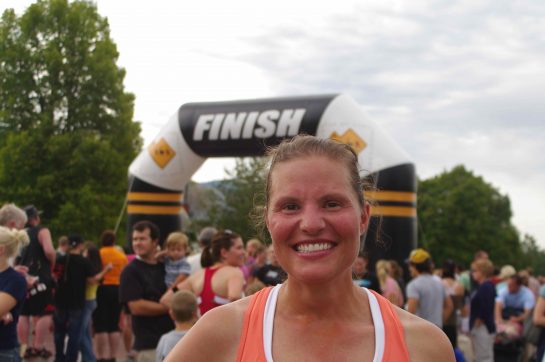
What is Team in Training and why did you decide to join it?
Team in Training, or TNT, is a branch of the Leukemia and Lymphoma Society that helps people train for long distance events and raises money for cancer research. At the time, being a leukemia survivor I thought, “You know, I feel like I have a personal investment in it.” It had been ten years since my bone marrow transplant. So I signed up for TNT in the fall of 2009. Ten days later, I was told that my leukemia was possibly back. There was such irony in that: I joined as a survivor and then ten days later I was told I was having a relapse.
I had been going annually for a blood draw; now, since the relapse, I go every three months. Medicine has changed since I was first diagnosed in 1997. They don’t even do bone marrow transplants for this type of leukemia anymore. They have an oral chemo drug that I will take daily and it will keep it in remission, but it’s not a cure. I will still have to stay on it. But it apparently won’t affect my quality of life. I haven’t started the oral chemo yet; the docs want to just monitor my blood counts and will decide when the timing is right for when I should start. Since I had already signed up with TNT, I decided I was going to still do it. I felt like I had even more of a reason to do it – finding a cure. I was doing a little research and found out that TNT funded the man who discovered the oral medication I take. I thought that was pretty neat.
We just keep going. Mentally I feel like, yes, I have cancer again; but, because I don’t feel any physical symptoms, I feel like I can keep going.
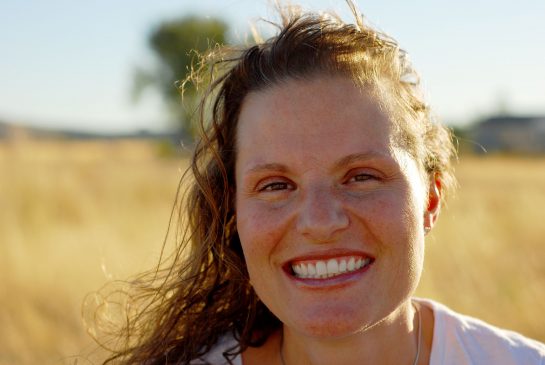
After my first season with TNT, I signed up to participate again, not only as an alumnus but as a Team Captain. The purpose of a Team Captain is, in addition to my own training and fundraising, I assist new participants with their questions or concerns, help them with their fundraising goals, and offer any support to help them succeed.
Do you think it inspires the team to know that you are a survivor?
I would assume it does, just having a close connection to the reason. Some people, when they join TNT, it’s usually because they know someone with, or have been affected themselves, by either leukemia or blood cancer or cancer in general. But some people just hear how it is training and support that will help them run an endurance event. TNT provides the coaches and training – and the inspiration – we have an honored teammate who is usually a child, because leukemia is commonly a childhood cancer. It brings it home. It makes it personal. That’s why I enjoy participating in Team in Training. I actually don’t love running. I want to love it, but I don’t. Some people talk about how they are just so addicted to it and they’ve just got to keep going because they love it. I like how I feel after, and so I think maybe that’s what they’re talking about. You can feel accomplished when you run.
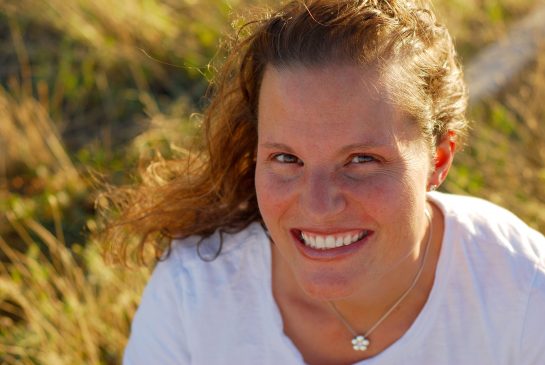
You say you don’t love running. Why do you run?
I think part of it is that I don’t know how to work out. And what’s running? You put on shoes, you don’t need equipment, and you just run. You just go. You’re at your own pace; it’s you against you.
All along my goal in running has been to improve; it’s me against myself. When I did my first half marathon I was running a 12:30-minute mile. The last one I did in a 9:30-minute mile. I’m improving. My goal eventually is to get under two hours, which means a nine-minute mile. But it’s not about the time. It sounds so cliché, but it’s about the journey.
One of the main reasons I wanted to join Team in Training was because I heard about the Nike Women’s Marathon. I want to be there. I want to see the sea of purple TNT jerseys, people all supporting the organization that is trying to find a cure for my disease.
There are so many unknowns in life. Running is symbolic of my life. I get out there and it’s hard. Life is hard. Running is hard. I thought life would get easier, but just like running has been for me, it hasn’t gotten easier. It’s hard to find the motivation to get up and to run. I think, “I can do this.” The point is I’m going to get there. I’m going to enjoy the journey, the training, the run itself.
When I was going to run the St. George marathon for the first time, I wasn’t ready. Scott said, “What’s the worst thing that’s going to happen? You’re going to walk? What does the finish line symbolize?” It’s not about the race, it’s not about finishing. Really it’s about your training. It’s not like you cross the finish line and then you’re done. You feel like you’ve made another milestone, but you’re not done. If you think you’re done, that’s when you need to reevaluate.
When I first got married, we started talking about when we should we start having kids, thinking that it was really up to us, and then within the moment of my diagnosis, it wasn’t up to me and then I realized it never really was. What you think is up to you, isn’t. The choices that you make, you think are only about you, but they’re not. We can affect other people in good ways. After all is said and done, you never know what difference you make.
You’ve faced many challenges in life. What has been the most difficult?
There are different kinds of hard. Some things are more physically hard. In the military, basic training was mostly physical, but it was also a mental game. On the mission you have the spiritual challenges–strengthening your testimony, wanting to share that with other people. The military was physically hard, and then the mission was emotionally and spiritually hard. Then the big cancer diagnosis… Well, that was hard in every way because you feel like you’re given a death sentence.
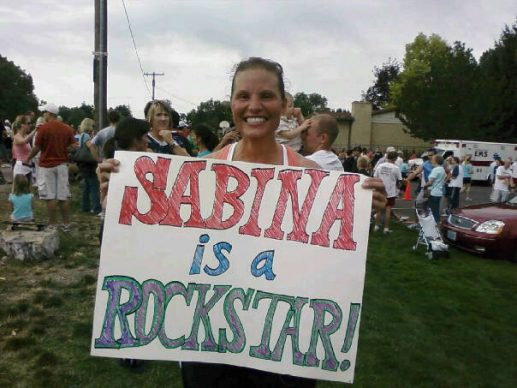
Do you feel like you have peace about the future? Or does that come and go?
I feel like I’ve always had peace about the future. And I think it’s because I learned early on that even with the choices I make, so much of my life is not in my control. That’s true as a parent as well: we have to find that balance of wanting to give, give, give our children everything, but finding that they need to work for things and learn things on their own.
There is light at the end of the tunnel. There is hope. If we do what we’re taught in the gospel and in our homes, we will see the blessings sooner or later. Sometimes it’s later. Sometimes I’m still waiting. But other times I feel like I’m blessed more than I deserve.
Sabina finished the Nike Women’s Half- Marathon on October 16th. She plans on running her fourth full marathon in Paris in April of next year. She still has her blood drawn quarterly.
At A Glance
Sabina Suggs
 Location: Saratoga Springs, UT
Location: Saratoga Springs, UT
Age: 37
Marital status: Married Scott Suggs on July 19, 1997… and still married
Occupation: one adopted child (Katie) – age 8
Occupation: Resident Coordinator at a Group Home
Schools Attended: Utah Valley University
Languages Spoken at Home: English
Favorite Hymn: “How Great Thou Art”
On The Web: http://pages.teamintraining.org/dm/paris11/ssuggs
Interview by Marintha Miles. Photos used with permission. Portraits by Jenica McKenzie.
At A Glance

